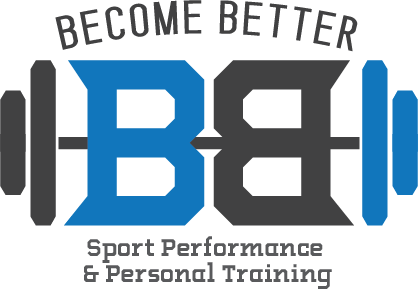How Training Can Help to Reduce the Risk of Injury
For the last few weeks, we have been solely focused on how work around injury in the weight room or how training can help to support injury once it has already occurred. This article will head into a slightly different direction and speak to how training can help to reduce the risk of injury. Between training general population clients, to all ages of athletes, we want to ensure that every person not only maintains their health, but can Become Better and continue to sustain and prolong that health for as long as possible. As you can guess, training is one of the best ways to achieve that prolonged health.
Strength Training Benefits for the General Population
Some of the biggest concerns for people who are either in the gym or outside of the gym is the potential risk for injury. While that is a legitimate concern to have, it should also be known that training in the gym can provide some of the best benefits to help prevent injury. Applying stimulus to the body with free weights of any kind can provide a numerous amount of health benefits that can decrease the risk of injury. Exercise can help functions of the body such as reducing/controlling high blood pressure, bone health, overall weight, blood flow increase and increased coordination/neurological function. That being said, the health benefits are not just limited to these.
Training will help to increase bone density based on the increased load that is placed on the body. If you train, your bone density will be higher than someone who does not, so if the person training misses a step or slips on ice, there is a better chance that lesser injury can happen versus someone who does no amount of training at all. The combination of higher density and coordination from training could be the difference between minor and major injury. With a heightened sense of blood flow, that means more nutrients will be flowing at a higher rate through the body to where it needs it. Providing nutrients is an essential function to keeping our muscles, tissues and organs as healthy as they possibly can be. Like we stated in our previous article, the amount of training needed to be done to achieve better levels in all of these characteristics does not need to be for many hours a day every day of the week. All that is needed to see benefits is that couple times a week for about an hour each session.
Strength Training Benefits for Athletes
As far as athletes go, they are going to see all of the exact same benefits that were spoken about with the general population. Where things get to be a little different, is using our education to program exercise so that the athletes have the best possible chance to not get injured. If an athlete gets injured they could lose a whole season and be set back behind the competition. Our job is to program exercise and progress these athletes to gain adequate strength, stabilization and the best athletic ability to get a step ahead of the competition. For the volleyball players, this is teaching them proper jumping and landing mechanics in the gym to have it translate to the court to help the reduction of knee damage. For baseball players, this would be teaching them a proper shoulder warm up and strengthening exercises to prolong the health of the shoulder girdle and limit rotator cuff issues.
The benefits of training will always outweigh the negatives. Reducing injury is just one of the many good things to training that can help everyone lead a healthy life. If you are concerned about potentially getting injured or know of someone who may have a higher risk, you should recommend them to get started with a trainer and get after it. It is never too late to get started and gain all the benefits training can do!

